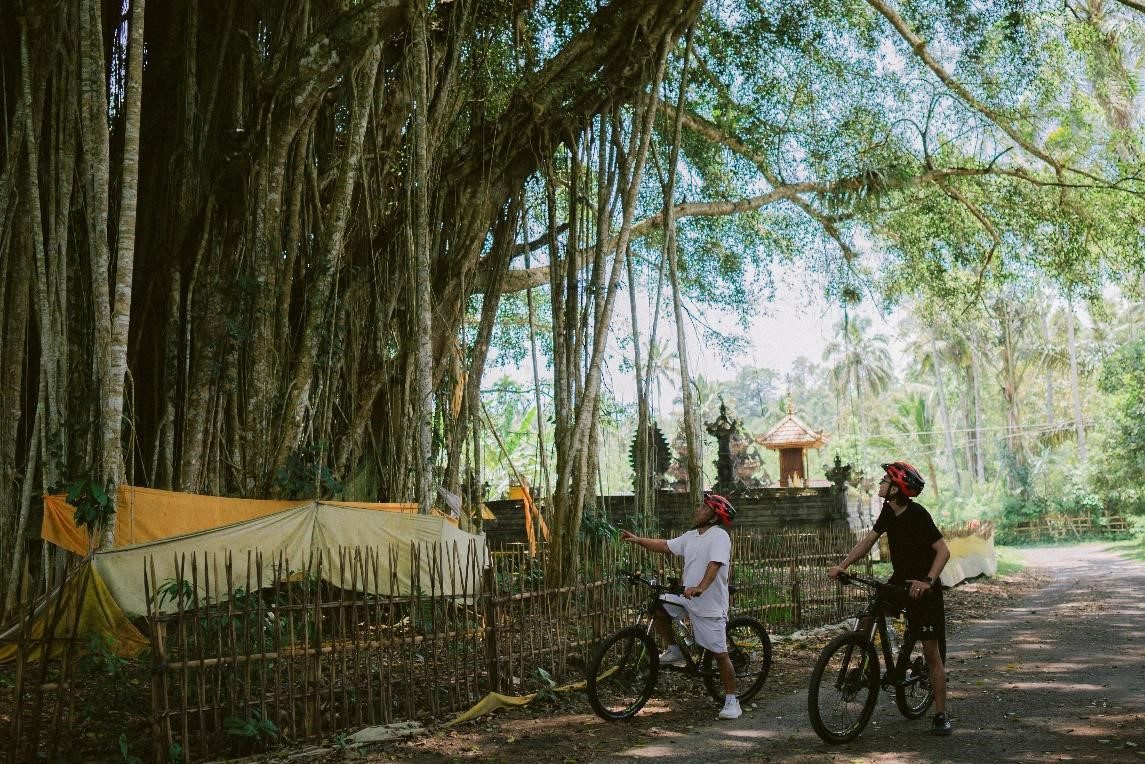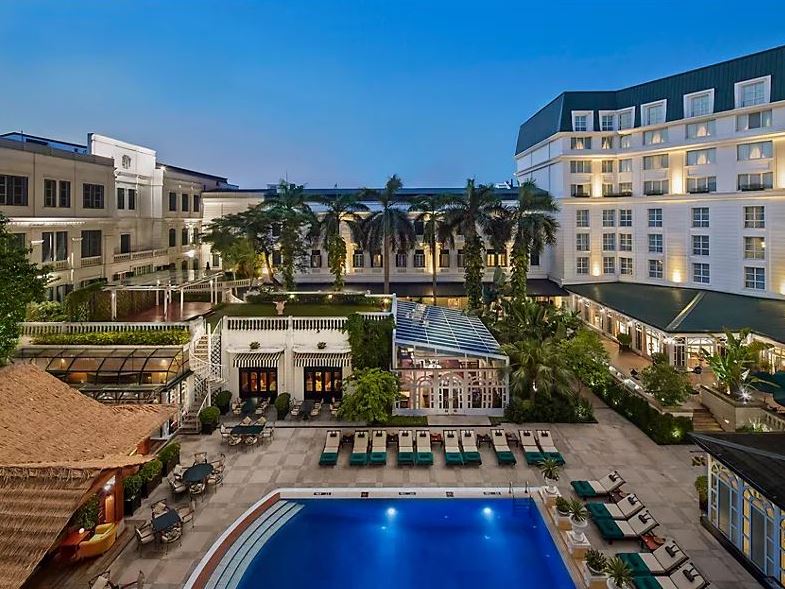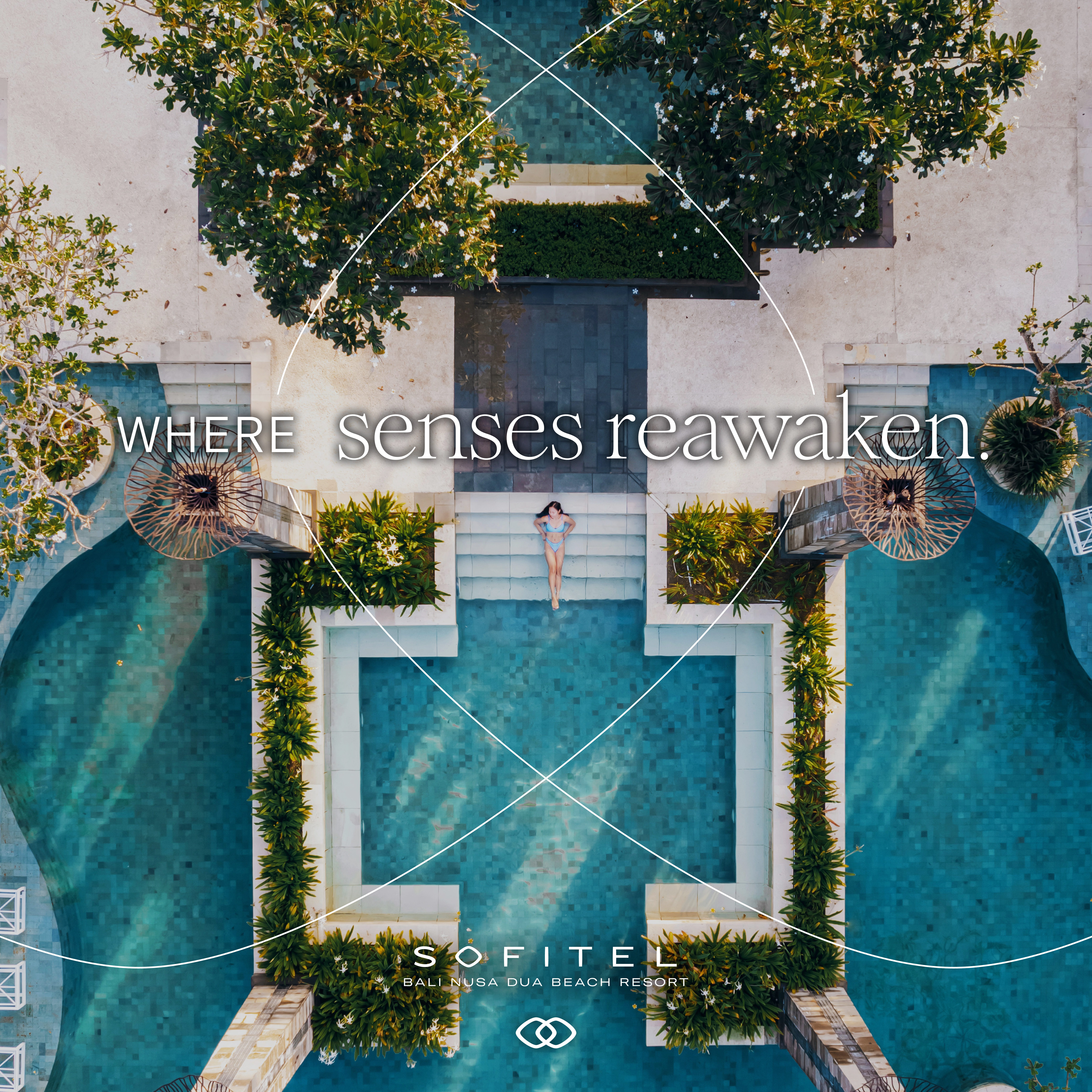There’s an undeniable enchantment that permeates the air in a historical hotel—each creaky wooden floorboard and teak antique, with its distinct aroma, whispers tales of the past, while elegant ‘alang-alang’ roofs and grand marble staircases evoke a sense of timeless grace. Majestic ancient trees stand sentinel outside, their gnarled branches bearing witness to centuries of history. These magnificent structures are not merely places to stay; they are living narratives, steeped in rich history and culture. From the vibrant streets of Yangon to the serene landscapes of Bali, Asia’s most exquisite heritage hotels invite you to embark on a journey through time, offering an unforgettable blend of luxury and legacy that transcends the ordinary. Here, our High-End Traveller editor has handpicked resorts with captivating stories, each promising a unique and immersive experience that goes beyond mere accommodation.
1. Alila Manggis

The story of this enchanting retreat began in 1994, when it was introduced as “The Serai Manggis.” In 2002, it evolved into the renowned Alila Manggis—a luxurious sanctuary set along the pristine shores of Manggis, a serene village in Bali’s Karangasem region. Nestled between the coastline and the dramatic presence of Mount Agung, Alila Manggis offers not just a seaside haven but also a gateway to the untouched wonders of East Bali, with its traditional villages, ancient water palaces, and world-class dive sites. If you’ve seen the film “Ticket to Paradise” starring Julia Roberts and George Clooney, you might recognize Alila Manggis as the stunning backdrop for several scenes.
As one of the first luxury resorts in East Bali, Alila Manggis holds a special place in the island’s hospitality history, with its roots intertwined with the visionary Adrian Zecha, founder of Aman Resorts. The resort’s architecture, designed by the celebrated Kerry Hill, who also crafted Amankila, mirrors a deep respect for the surrounding natural beauty. Hill’s vision was to create a seamless harmony between the resort and its environment, ensuring the design enhanced the allure of this rural destination. The result is a thoughtful blend of contemporary elegance and traditional Balinese vernacular, creating a resort that feels like an extension of the local village, centered around a pool shaded by swaying coconut palms. For nearly three decades, Alila Manggis has stood as a symbol of refined simplicity, honoring both heritage and modernity in every experience it offers.
Address: Desa Buitan, Manggis, Karangasem Regency, Bali 80871
2. Bali Beach Hotel, The Heritage Collection

Bali Beach Hotel, originally built in 1962, holds a significant place in Indonesia’s history. The project was initiated by the Indonesian government, led by the visionary President Ir. Soekarno, and funded through war reparations from Japan. During its construction, the project team leased four bungalows at Tandjung Sari, blending seamlessly with the rich local culture. The hotel was officially inaugurated by Sri Sultan Hamengkubuwono in 1966, marking a new era for tourism in Bali.

Now, in 2024, this iconic property unveils a new chapter as a five-star resort in Sanur, preserving its historical façade while offering a modern and luxurious experience. The careful restoration honors its legacy while embracing the future, making it a timeless symbol of Balinese heritage and hospitality.
Address: Jl. Hang Tuah, Sanur Kaja, Denpasar Selatan, Kota Denpasar, Bali 80227
3. Cheong Fatt Tze Mansion, Penang, Malaysia
 Image source: Cheong Fatt Tze Mansion, Penang, Malaysia
Image source: Cheong Fatt Tze Mansion, Penang, Malaysia
Crazy Rich Asians movie is full of memorable scenes, but the most iconic is the mahjong showdown between Eleanor Young (Michelle Yeoh) and Rachel Chu (Constance Wu). Director Jon M. Chu considered it the film’s most important moment, requiring a setting as exceptional as the scene itself. The Cheong Fatt Tze Mansion, or Blue Mansion, in Georgetown, Penang, was chosen for its historical charm and striking blue walls. Built in the late 19th century for tycoon Cheong Fatt Tze, the mansion blends Eastern and Western design elements, like Scottish cast-iron balusters with Cantonese timber lattices.
Now a boutique hotel with 18 rooms, the Blue Mansion is an outstanding example of heritage conservation. Its six-year restoration preserved everything from the terracotta tiles to timber beams, using traditional methods and local materials. Each room showcases period-appropriate furniture and features, with artifacts from Cheong Fatt Tze’s own collection adding to the authentic atmosphere. Whether staying in a Ming Collection room with pool access or a Tang Suite with a Jacuzzi, guests are immersed in the mansion’s rich history and unique charm.
Address: Georgetown UNESCO Historic Site, 14, Lebuh Leith, George Town, 10200 George Town, Pulau Pinang, Malaysia
4. The Peninsula Hongkong
 Image source: The Peninsula Hong Kong
Image source: The Peninsula Hong Kong
The Peninsula Hong Kong, known as the “Grande Dame of the Far East,” has been a symbol of elegance and luxury since its opening in 1928. With its prime location overlooking Victoria Harbour in Tsim Sha Tsui, one of Hong Kong’s top districts for shopping, entertainment, and business, the hotel continues to set the standard for timeless grandeur in hospitality.
As one of the few independent grand hotels in Asia nearing its 100th anniversary, The Peninsula Hong Kong remains a pillar of sophistication. Originally billed as “the finest hotel east of the Suez,” this iconic property has retained its historic charm under the founding Kadoorie family, while evolving through careful renovations. Its success has inspired a global chain of luxury hotels, each with its own distinct style, but all upholding the Peninsula’s tradition of excellence.
Address: Salisbury Rd, Tsim Sha Tsui, Hong Kong
5. Alila Ubud
 Image source: Alila Ubud
Image source: Alila Ubud
Just two years after the creation of Alila Manggis, in 1996, The Chedi Ubud was born—designed by the same visionary architect, Kerry Hill, and sharing the same lineage through GHM, the hospitality company founded by Adrian Zecha, who also established Aman Resorts. As a result, The Chedi Ubud shares a kinship with its prestigious sister property in Ubud; Amandari and also The Serai Manggis.
“Chedi,” meaning “stupa” in Thai, was chosen to represent a sanctuary of serenity amidst nature’s splendor. By 2001, the property rebranded under Alila management, and today, it is celebrated as Alila Ubud.
One of Alila Ubud’s most iconic features is its breathtaking 25-meter infinity pool, which extends toward the edge of a cliff, offering panoramic views of the Ayung River valley below. Perched along the steep riverbanks, the resort is designed to mirror the layout of a traditional Balinese hillside village. Built on stilts overlooking the ravine, the rooms and villas open onto private balconies, terraces, or gardens, offering an immersive connection to the surrounding nature and a peaceful space for quiet reflection.
Address: Alila Ubud. Desa Melinggih Kelod, Payangan, Gianyar, Bali 80572 Indonesia
6. Hotel Yak & Yeti, Nepal
 Image source: Yak & Yeti Hotel
Image source: Yak & Yeti Hotel
As Nepal’s first luxury hotel, the Royal Hotel opened its doors in 1951, quickly becoming a vibrant hub for high society. Its famed Yak & Yeti restaurant and bar gained renown as the place to enjoy refined cuisine and drinks in a sophisticated setting. This success naturally led to expansion, and on 27 September 1977, to celebrate World Tourism Day, the Yak & Yeti Hotel was unveiled after four years of meticulous construction.
Housed within the red-marble Lal Durbar palace, the hotel preserves a royal ambiance with its neoclassical architecture, open courtyards, high ceilings, and antique wooden fixtures. The former Maharaja’s bedroom, now known as the Dynasty Room, remains a testament to opulence, featuring gold-embossed walls, gilt mirrors, and sparkling chandeliers. Today, the Yak & Yeti Hotel seamlessly intertwines Nepal’s rich history with modern luxury, offering guests a glimpse of the grandeur of the past while showcasing the restored Lal Durbar as Kathmandu’s premier convention space.
Address: Hotel Yak & Yeti, Durbar Marg, Kathmandu 44600, Nepal; +977 1-4248999
7. Rambagh Palace, India
 Image source: The Rambagh Palace
Image source: The Rambagh Palace
The Rambagh Palace whisks you away to a bygone era, when the opulent maharajas ruled over Jaipur. Upon arrival, guests are greeted with a shower of rose petals in a traditional welcome, setting the tone for an unforgettable stay. The grand lobby unfolds into a regal courtyard, surrounded by 47 acres of lush grounds where peacocks roam freely.
Originally built in 1835 for the queen’s favored handmaiden, the palace was later transformed in the early 1900s into a royal residence after an extensive refurbishment. In 1957, the palace embraced a new chapter as a luxury hotel under the care of the esteemed Taj Hotels, preserving its regal legacy for generations to come.
Address: Bhawani Singh Rd, Rambagh, Jaipur, Rajasthan 302005, India
8. Sofitel Legend Metropole Hanoi, Vietnam
 Image source: Sofitel Legend Metropole Hanoi
Image source: Sofitel Legend Metropole Hanoi
When it first opened in 1901, the Metropole quickly emerged as a beloved retreat for dignitaries and celebrities, including the likes of Charlie Chaplin and author Graham Greene. These illustrious guests often frequented the hotel’s iconic streetside restaurant, savoring leisurely afternoons enveloped in its enduring charm.
Following the end of the French-Indochina War in 1954, the hotel transitioned into the hands of the Vietnamese government and was renamed “Thong Nhat,” meaning “Reunification,” symbolizing a new era of hope. By 2009, the Metropole proudly became the first property to join the prestigious Sofitel Legend collection, elevating its legacy within a distinguished group of luxury hotels known for their historical significance. Today, this stunning example of colonial architecture remains the epitome of luxury in Hanoi, with its neoclassical façade and tranquil garden courtyard reflecting the timeless elegance of French sophistication.
Address: 15 P. Ngô Quyền, Street, Hoàn Kiếm, Hà Nội 100000, Vietnam
9. Amanyangyun, Shanghai, Chinese Mainland
 Image source: Amanyangyun
Image source: Amanyangyun
The creation of Amanyangyun was an extraordinary feat of preservation and vision. To save 10,000 ancient camphor trees and 50 heritage structures from destruction due to a reservoir project in Fuzhou—700 kilometers away—a Fuzhou-born philanthropist undertook the monumental task of relocating them to a vast plot just outside Shanghai. These Ming- and Qing-dynasty buildings were meticulously restored, each now featuring two serene courtyards, one with a cozy fireplace, along with the luxury of an outdoor bath. Seamlessly blending history with modern luxury, Amanyangyun also offers a world-class Aman Spa, two tranquil swimming pools, and six exquisite dining venues, all nestled within the lush forest. In these peaceful surroundings, it’s hard to believe that the bustling heart of Shanghai is just under an hour away—a sanctuary where nature and heritage harmoniously coexist.
Address: 6161 Yuanjiang Road Minhang Qu Shanghai Shi, 201111,China


 Image source: Cheong Fatt Tze Mansion, Penang, Malaysia
Image source: Cheong Fatt Tze Mansion, Penang, Malaysia Image source:
Image source:  Image source: Alila Ubud
Image source: Alila Ubud










